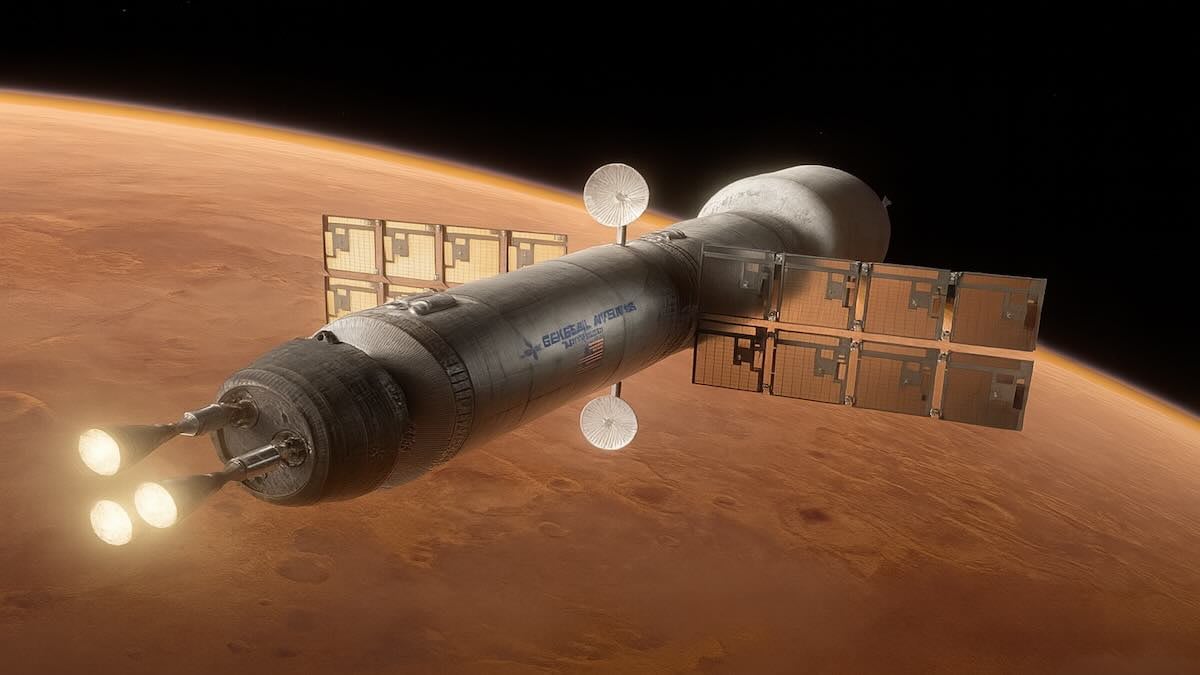Human missions to Mars will rely on a nuclear thermal propulsion stage that promises roughly double the efficiency of chemical rockets and shorter cruise times. The concept matured from 1960s ground tests to a modern program that advanced again in 2021 with new hardware proposals. A phased plan points to reactor design and integration in 2025–2030, extensive ground testing in 2030–2035, and potential mission deployment from 2035 onward. With higher performance and built-in safeguards, this engine is central to nasa’s Mars architecture.
How nuclear propulsion for Mars took shape
Initial investigations during the 1960s era—particularly through Kiwi and Phoebus initiatives—demonstrated that nuclear systems could superheat fuel to generate substantial propulsive force, confirming technological viability for interplanetary journeys. Development subsequently decelerated while engineers addressed persistent structural integrity and radioactive shielding obstacles. Multiple decades of gradual improvements culminated in renewed momentum: during February 2021, authorities requested submissions for advanced nuclear thermal rocket components, transitioning from experimental research toward operational development targeting future human expeditions to Mars.
What the early programs taught
Kiwi and Phoebus showed that compact reactors could survive high-temperature operations and deliver strong thrust levels in ground environments. They also highlighted where to focus: keeping radiation sealed away from crew and avionics, selecting materials that tolerate sustained heat, and validating performance through repeatable tests rather than one-off demonstrations.
Why nasa is betting on nuclear thermal propulsion
A nuclear thermal engine employs a reactor core to transform liquid fuel into superheated vapor, which subsequently accelerates through an expansion nozzle to generate propulsive force. The achievable specific impulse may attain approximately 900 seconds—nearly double the ~450 seconds characteristic of advanced chemical propulsion—indicating enhanced velocity change per propellant mass and increased versatility for trajectory planning. This technology incorporates multiple protective systems to maintain radioactive isolation and safeguard the vehicle throughout extended operational periods.
How a flight stage would operate
During interplanetary cruise, the reactor remains off until burns are required. For each maneuver, the reactor brings the propellant to high temperature, the engine generates thrust, and the system then powers back down. That on-demand cycle reduces propellant needs while preserving engine life across multiple burns.
Safety and performance at a glance
Contemporary configurations integrate protective barriers, isolation protocols, and procedural guidelines that reduce radioactive exposure to personnel and critical components. Contrasted with chemical propulsion, nuclear thermal systems deliver significantly elevated specific impulse and advantageous thrust-to-energy characteristics, facilitating accelerated journey times or expanded cargo capacity within identical mass constraints.
Mission impacts, risks, and what to plan for
Shorter travel times reduce crew exposure to deep-space hazards and can increase time available for science at Mars. Higher efficiency also creates options: launching heavier equipment, adding redundancy, or building margins for trajectory changes. Program risks remain real and manageable: proving materials over long duty cycles, demonstrating ground safety, and validating the shielding model with high confidence before flight. Best practice is to align engine development with mission planning so that timelines for qualification, crew systems, and surface operations evolve together.
Practical checkpoints for teams
Before committing to a flight article, developers should complete sustained hot-fire campaigns, confirm radiation models across operating regimes, and verify integration with power, thermal control, and guidance systems. Clear interfaces—mechanical, electrical, and software—help avoid late-stage redesigns that can ripple across mission schedules.
Timelines, partnerships, and what the numbers imply
The program’s recent milestones include the 2021 request for hardware proposals and a structured path that targets design and integration between 2025 and 2030, followed by ground testing and simulations from 2030 to 2035. From 2035 onward, a nuclear thermal stage could support mission deployment to Mars. Collaboration with the U.S. Department of Energy and industry leverages reactor expertise, shares cost and risk, and accelerates test readiness. Performance figures frame the pay-off: where a chemical engine sits near ~450 seconds of specific impulse, nuclear thermal propulsion aims near ~900 seconds, translating directly into mission flexibility or shortened cruise durations.
Constraints to watch
Two areas define the critical path: radiation containment across all phases (testing, launch, and space operations) and materials that retain strength after repeated high-temperature cycles. Clear gate reviews tied to those items keep schedules credible and ensure the engine’s benefits translate into real mission capability for nasa.
Key takeaways for future Mars missions
A nuclear thermal stage—proven in principle since the Kiwi and Phoebus experiments and reinvigorated by 2021 hardware calls—offers about twice the efficiency of chemical propulsion, unlocking faster Mars transfers or bigger payloads. To track progress, follow reactor design down-selects (2025–2030), the major ground test window (2030–2035), and flight planning beyond 2035. For mission designers, align trajectories, shielding, and systems integration early so the propulsion advantage translates into safer, more capable crewed Mars expeditions with nasa.
